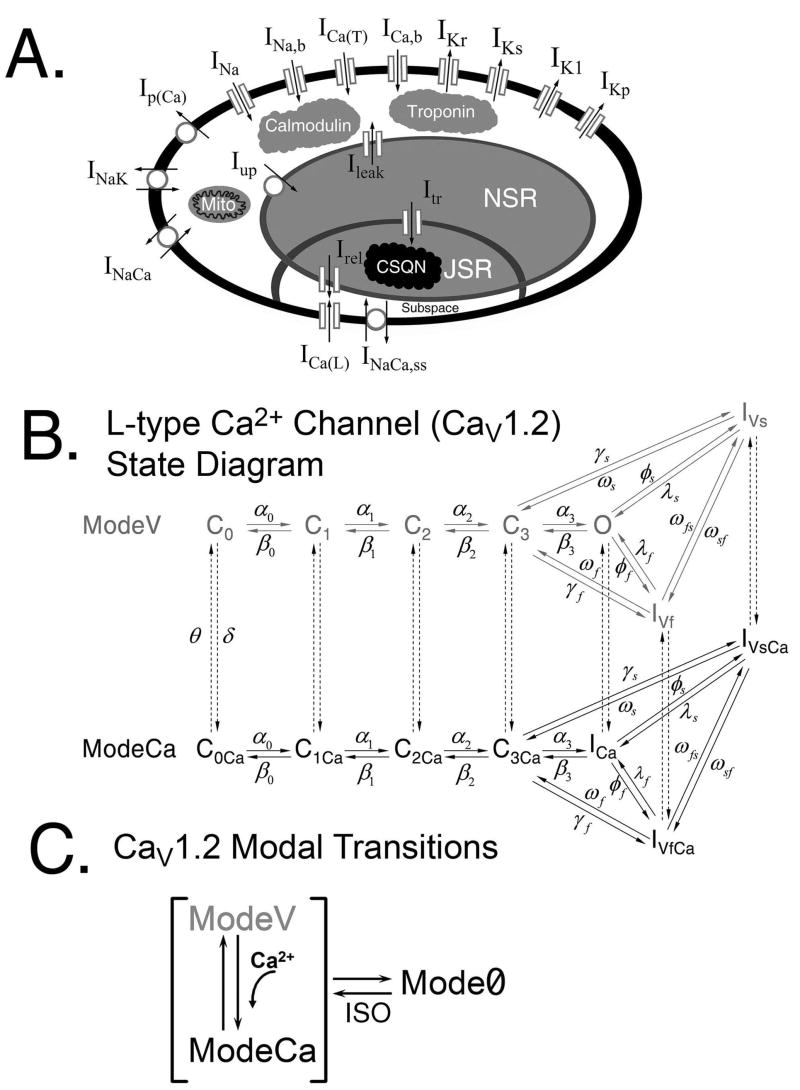FIGURE 1.
(A) Schematic of the five compartment myocyte model (bulk myoplasm, JSR – junctional SR, NSR – network SR, mito – mitochondria, and t-tubular subspace). (B) State diagram of the L-type Ca2+ channel Markov model. The conducting mode, ModeV (grey) consists of four closed states (C0, C1, C2, and C3), a single conducting state (O), an inactivation state into which channels move rapidly (IVf) following depolarization, and an inactivation state into which channels enter more slowly (IVs). ModeCa (black) is a non-conducting mode representing channels which have inactivated due to Ca2+. (C) Modal transitions of the CaV1.2 Markov model. From any of the states in ModeV, channels may inactivate via CDI (shown as a transition from ModeV to ModeCa). Channels can also transition into Mode0, a non-conducting mode that serves as a reserve of channels that are activated in the presence of ISO. Details are in the reference [8] and Online Supplement.

